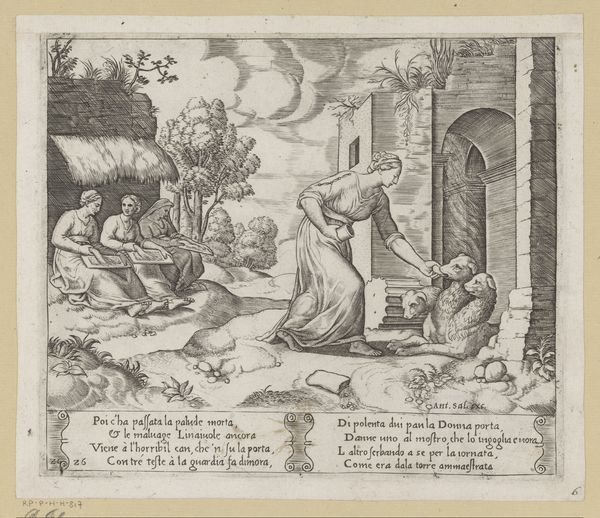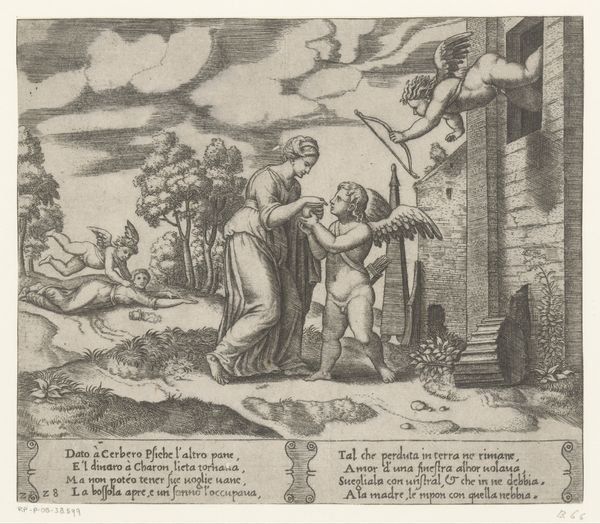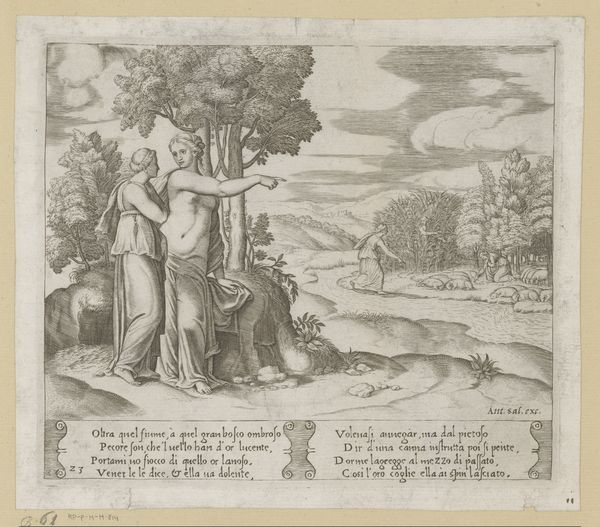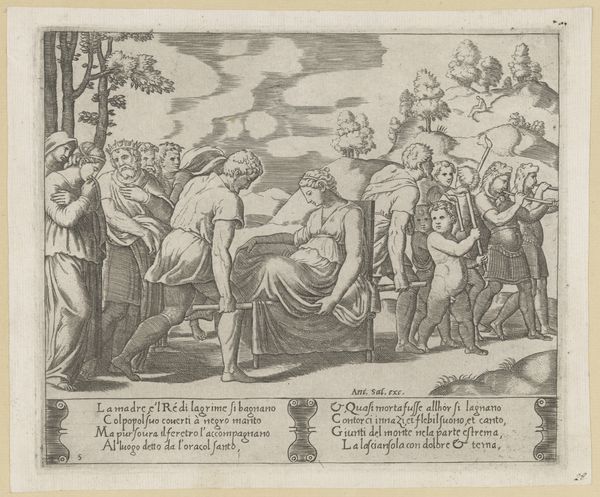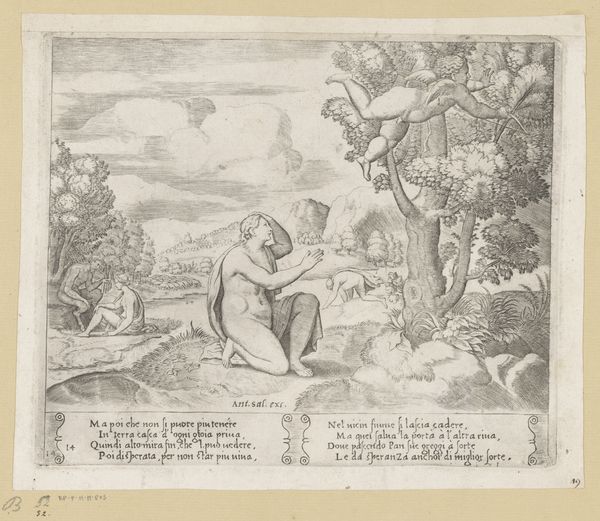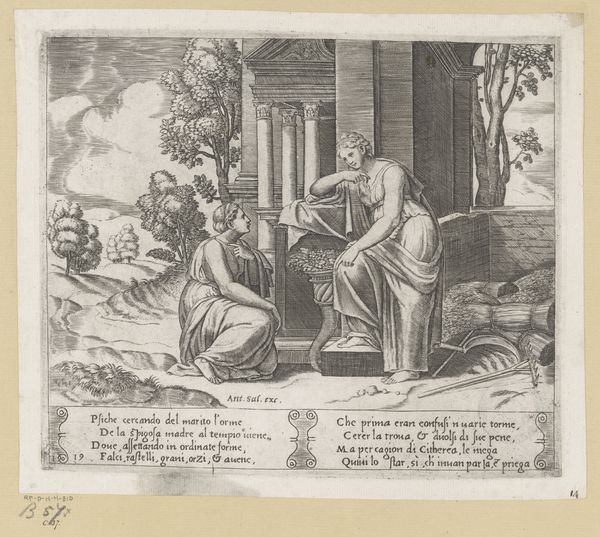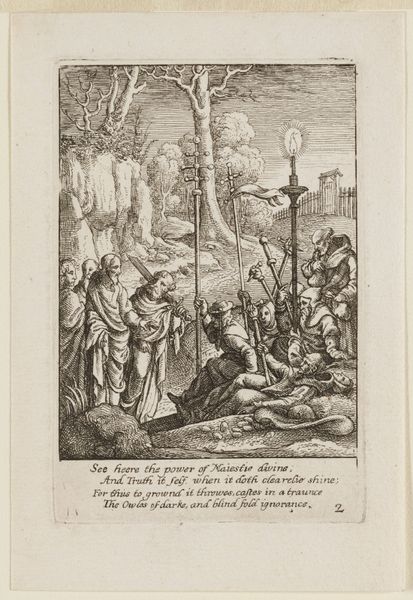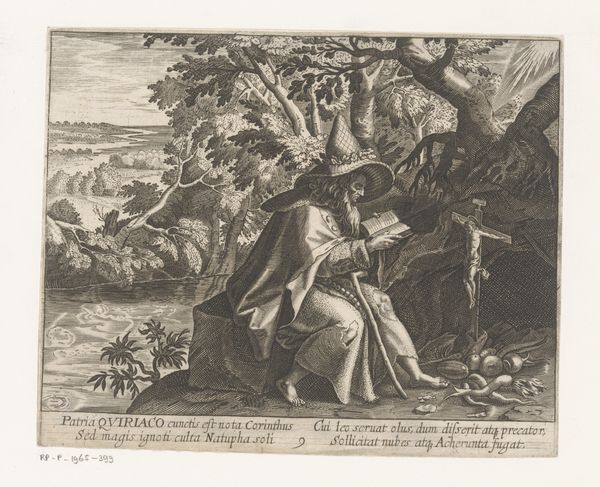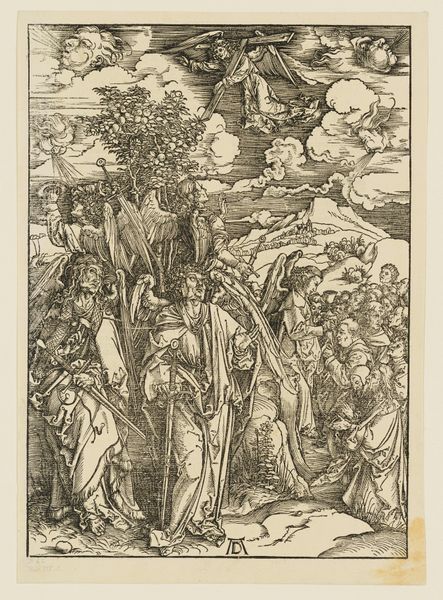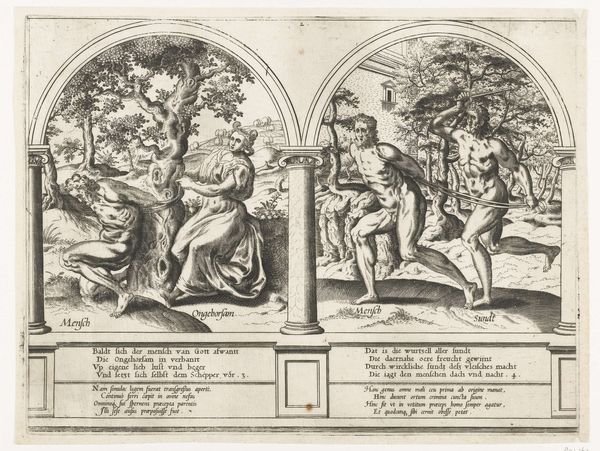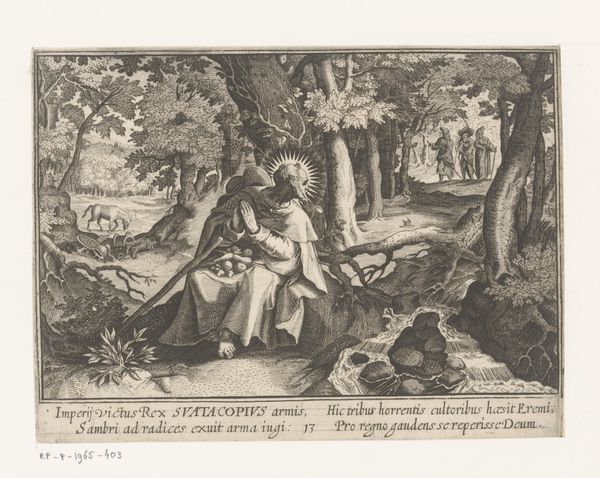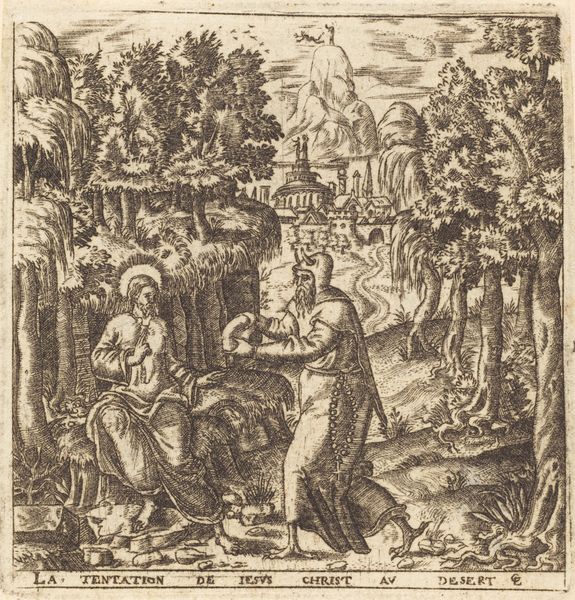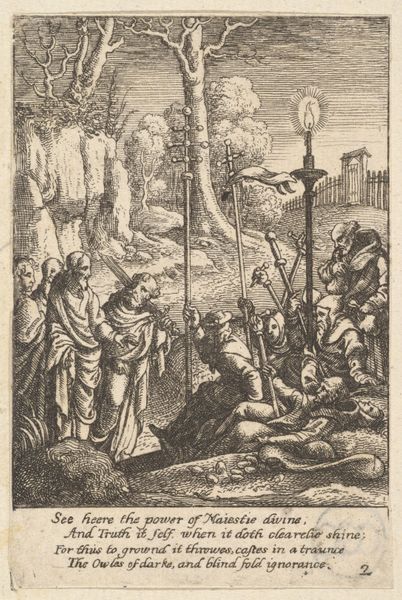
print, engraving
#
allegory
# print
#
landscape
#
mannerism
#
figuration
#
line
#
history-painting
#
engraving
Dimensions: height 200 mm, width 237 mm
Copyright: Rijks Museum: Open Domain
Curator: "Psyche onderweg naar de onderwereld," or "Psyche on her Way to the Underworld," an engraving crafted around 1530-1560 by the Master of the Die. You can find it here at the Rijksmuseum. What are your initial thoughts? Editor: A somber journey, if the line work is anything to go by. A landscape, yes, but a constricted one, full of sharp, defined strokes that seems to emphasize a kind of laborious materiality – as if the weight of each etched line mirrors Psyche's burden. Curator: Precisely! Considering Psyche’s plight is not simply a personal failing, but a demonstration of gendered expectations and the constraints placed upon female autonomy during that era, the weight is definitely apparent. Notice how the figures, the architectural forms, are caught in the grip of this rigid linework that denies softness. Editor: So the stark contrasts – the solid tower looming against the delicate figures, that rough-hewn landscape against Psyche's idealized form – underscore those tensions between her societal role and her individual agency? Curator: Precisely. Look at the figure who is being pushed by a cloaked individual: it almost certainly signals the loss of selfhood as Psyche descends. And of course, that loss ties to expectations surrounding a woman’s duty, or destiny. This intersectional dialogue between Greek mythology, the act of engraving, and the place of the figure, presents new approaches of looking and engaging with the image, and it speaks volumes about social relations of the era. Editor: It's striking to consider the economic implications inherent in this reproductive print, as well. A piece of paper transforms, through skilled labour and the reproductive possibilities of engraving, into something accessible, almost mass produced for its time. The materiality enables wide consumption of not only the images, but also its ideology. Curator: So well stated! By framing our interpretations with context of labour and social factors we find ourselves staring not just at a classical scene but at the reflection of societal beliefs encoded within lines, paper, and ink. Editor: Absolutely, recognizing the historical framework enriches our viewing experience, prompting considerations on societal roles reflected through artistic techniques and the work it took to create such imagery, but, by considering materials we begin to unravel how ideologies spread at large during the Early Modern Period.
Comments
No comments
Be the first to comment and join the conversation on the ultimate creative platform.
